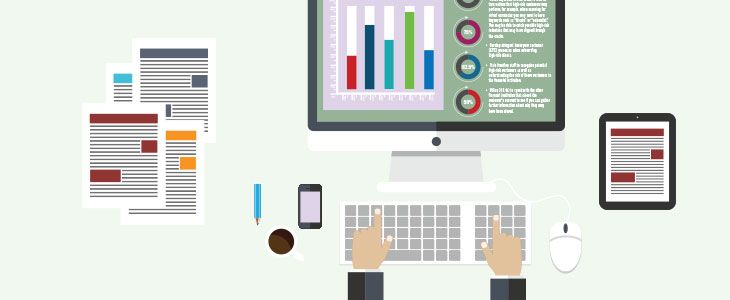
As an employee of a community bank, I have noticed the effects of "de-risking" first hand. In the past few months my bank has received numerous walk-in customers and phone calls asking if we would bank their business type. At first I wanted to work with the customers to see if we could bank them, but I opened the flood gates once customers that have had accounts closed at other institutions found out that we were considering opening accounts for their industry. As a result, many of them started to come into the branches asking if we were opening accounts.
My philosophy has always been that banks are a wealth of intelligence for law enforcement to help fight crime. Monitoring customer accounts, following the money and notifying law enforcement when any unusual activity occurs is key to helping law enforcement in fighting crime. I keep an eye on customer activity and as a banker I do my part and report any suspicious activity, in order to ensure that our bank is not at any risk from the customer's activity. However, I had to rethink this philosophy, given my most recent experiences with numerous money transmitters and third-party payment processors inquiring about accounts at our bank. In the past month our bank has had over 30 inquiries from higher risk businesses simply asking if we would bank their business.
When banks de-risk by exiting higher risk clients, there is a trickle-down effect on banks. Many times it is a business decision to exit a group of customers that are a higher risk to monitor because of the cost to the institution. When banks take these actions they do so without giving the customer much in the way of explanation, or if they do give an explanation the customer may not understand the reasoning behind why they are being exited and as a result they start looking for help and banking services elsewhere.
When these high-risk business types are closed out of one institution and possibly rejected by numerous others they may utilize their personal accounts for business purposes, be untruthful to the front-line employee opening the account just to get their foot in the door of a bank, or take their funds out of the financial system all together.
By the time they come to community banks they are frustrated, which in turn frustrates the front-line staff at the community bank. At this point, decisions need to be made (better to make them sooner than later) on whether to bank that industry. As a community banker, there are some key items to look for when "de-risked" customers come to your institution to try and open accounts. In some cases the customer may tell your bank that their accounts have been closed out by another bank or you may not know they are de-risked customers so you may need to implement some of the following to protect your bank:
- Utilize your anti-money laundering (AML) system to recognize red flags for certain high-risk business types.
- Utilize keywords in data scans to look for transactions that high-risk customers may perform; for example, when scanning for virtual currencies you may want to have keywords such as "bitcoin" or "coinwallet." You may be able to catch possible high-risk industries that may have slipped through the cracks.
- Develop stringent know your customer (KYC) processes when onboarding high-risk clients.
- Train front-line staff to recognize potential high-risk customers as well as understanding the risk of those customers to the financial institution.
- Utilize 314 (b) to speak with the other financial institution that closed the customer's account to see if you can gather further information about why they may have been closed.
- Place in your policy or procedures that the front-line personnel must consult the Bank Secrecy Act/anti-money laundering (BSA/AML) section prior to opening certain accounts for certain customers.
- If there are accounts your bank may want to choose not to open, spell that out in the policies and procedures of the bank. If exceptions are made, ensure that it is documented there as well. For example, would you not open an account for all third-party payment processors or just ones that meet certain criteria (foreign/international, etc.)?
- Establish strategies for maintaining high-risk customer accounts, ensuring adequate staff and technology is available to monitor for suspicious activity and file reports.
- Use a risk-based approach in monitoring customers. Utilizing tags/product or customer codes to identify the high-risk customer types in your system, so you can have alerts/scenarios catered for those customers in particular in case their activity becomes out of the ordinary.
- Have the ability to classify customers to run comparisons on the businesses and look to document the reasons for any customers that may be outside the norm.
- Utilize analytics to look for abnormalities; for example, you can use Excel to create sheets to show how the funds come into the customers' accounts and how they go out. Make sure to take into account the type of business and what they sell and what their services are. For an example of a money services business (MSB) that is a convenience store and gas station or for other analytical sheet examples using Excel, click here.
- Utilize North American Industry Classification System (NAICS) codes to categorize the businesses that open accounts at your institution. This can give you the ability to recognize customers in your system for proper monitoring.
- Send annual questionnaires to customers to keep track of any changes in their business. You can do this at account openings as well and you can track the changes when you assess the questionnaires upon their return to your department.
- Meetings/conversations with the client may be necessary in some cases, if time permits. Taking the time to sit down with potential customers or having phone conversations with them may be needed. In many cases this can take up a large amount of time and effort.
- Train front-line staff to handle the majority of the customers and be the liaison. In many cases this may cut the time your team would need to spend in handling the customer interaction, if needed.
Conclusion
With the present de-risking environment, it is essential to prepare your bank and your staff to recognize and understand the risk. Make decisions now on which industries your bank would or would not bank based on their risk. Understand the frustration that many of the customers may have and if you can and are willing to help them. In the end, you must know what you are getting into and know the risk to your bank.










